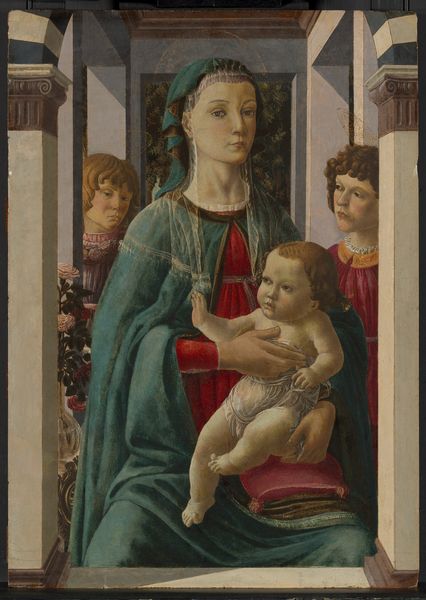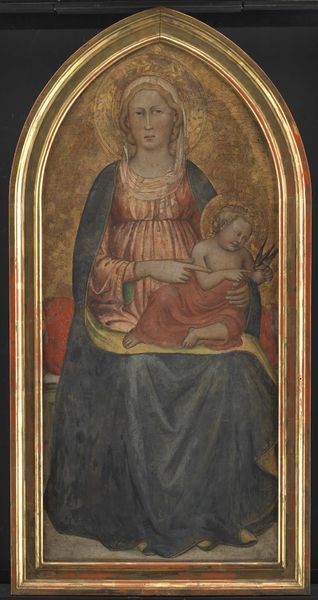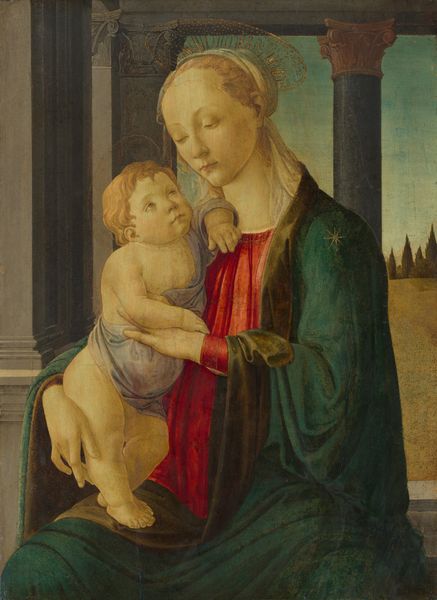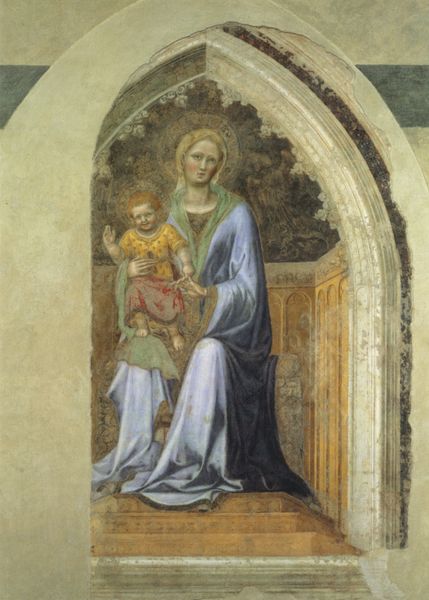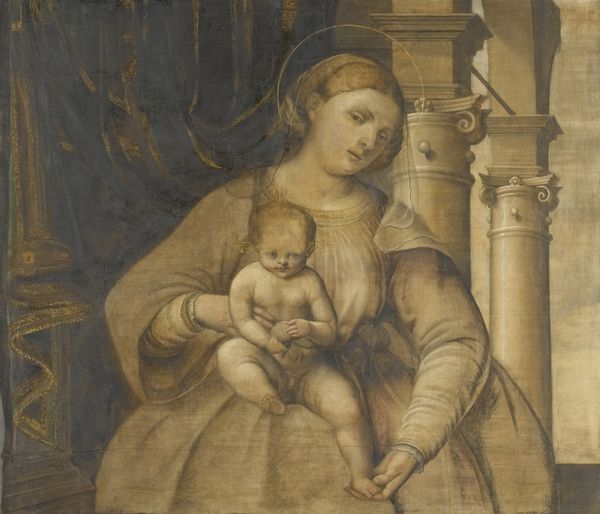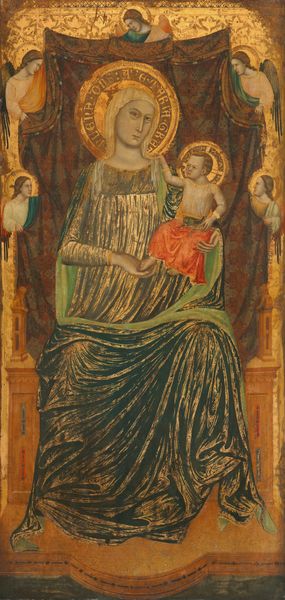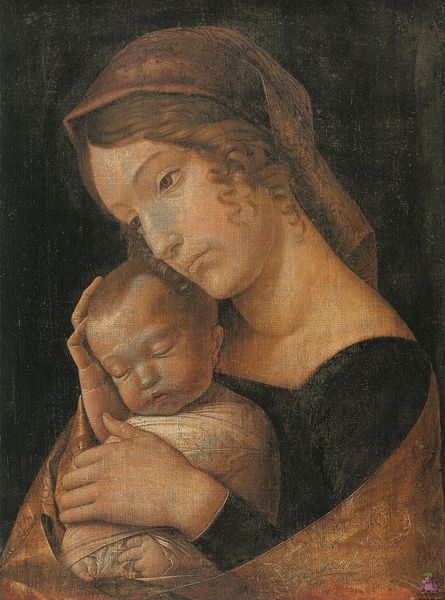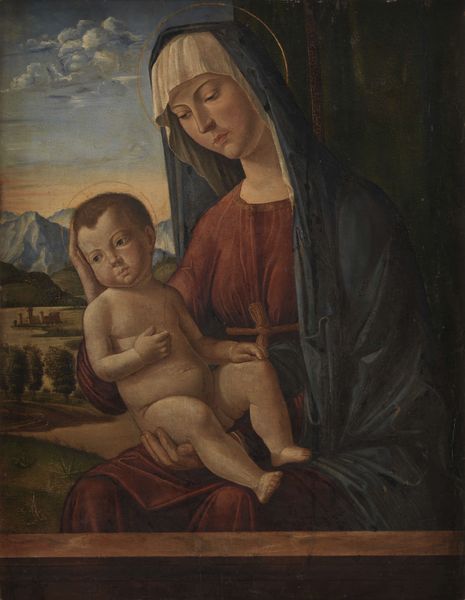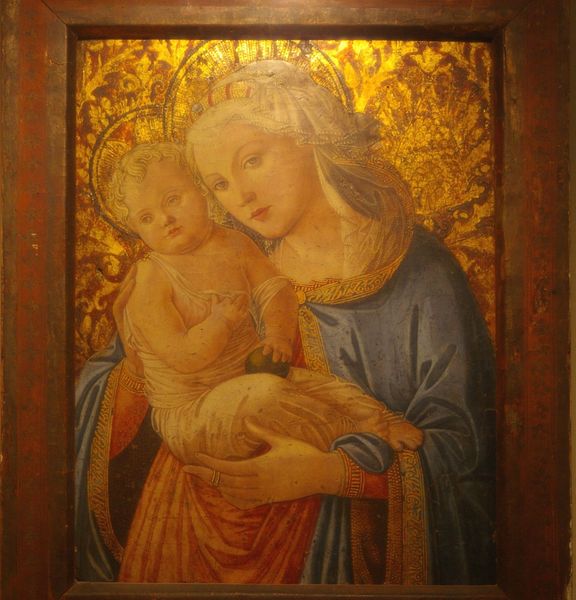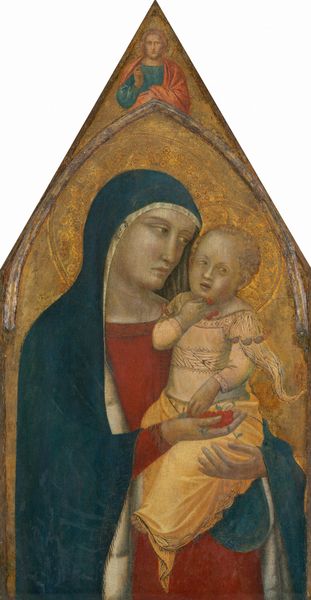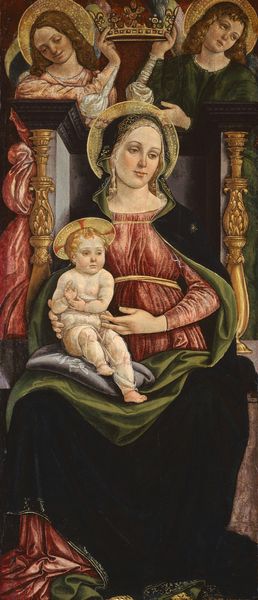
painting, oil-paint, fresco
#
portrait
#
painting
#
oil-paint
#
figuration
#
fresco
#
oil painting
#
child
#
christianity
#
painting painterly
#
italian-renaissance
#
early-renaissance
#
christ
Copyright: Public domain
Pietro Perugino's "Madonna with Child," likely made around 1522, demonstrates the fresco technique, where pigments are applied to wet plaster. This method demanded speed and precision. The artist had to work quickly, applying paint before the plaster dried, making corrections nearly impossible. Notice the delicate, almost ethereal quality of the colors, achieved through the careful layering of pigments. The smooth surface reflects the nature of the plaster itself, while the pigments have bonded with the wall, becoming an integral part of the architecture. Fresco painting was a labor-intensive process, requiring skilled artisans to prepare the plaster and grind the pigments. The longevity of frescoes, however, made them a popular choice for decorating churches and public buildings, ensuring that the artwork would endure for generations. Considering the materials and the process of its creation allows us to understand the artwork as more than just an image; it is a testament to the skill and labor of the artist, the properties of the materials, and the cultural values of the time.
Comments
No comments
Be the first to comment and join the conversation on the ultimate creative platform.
